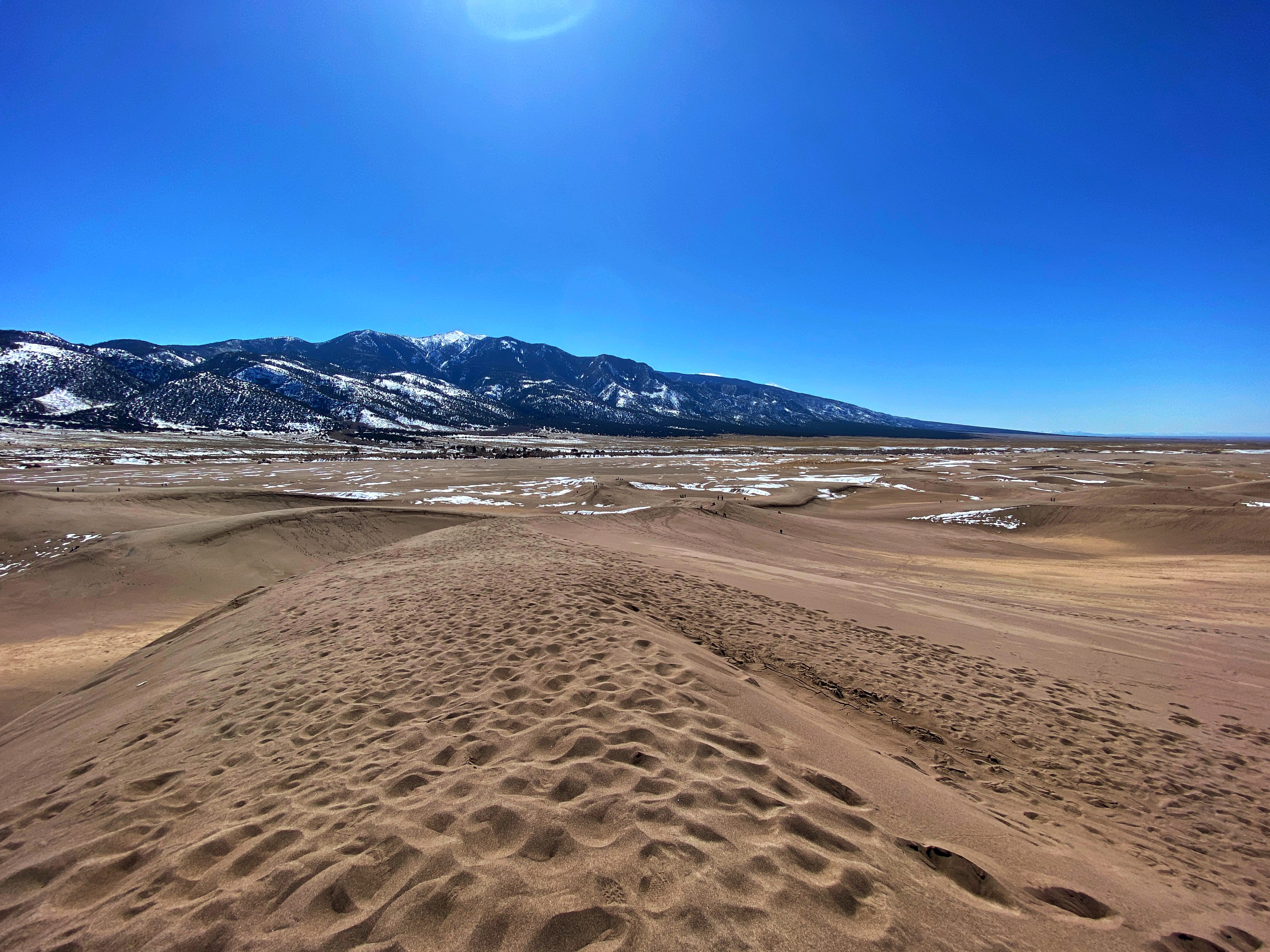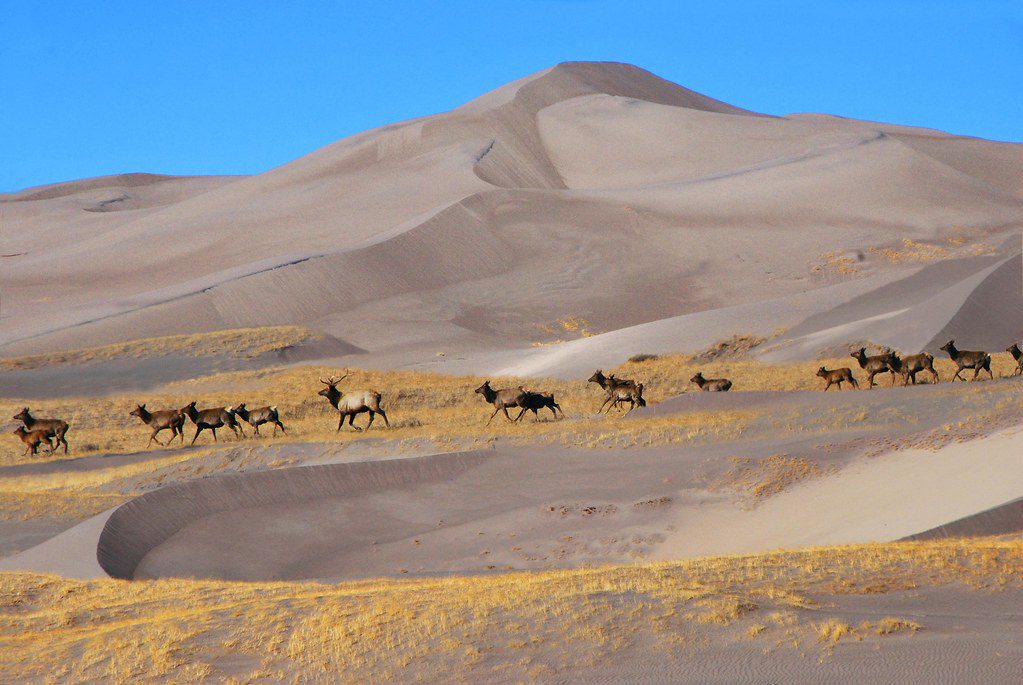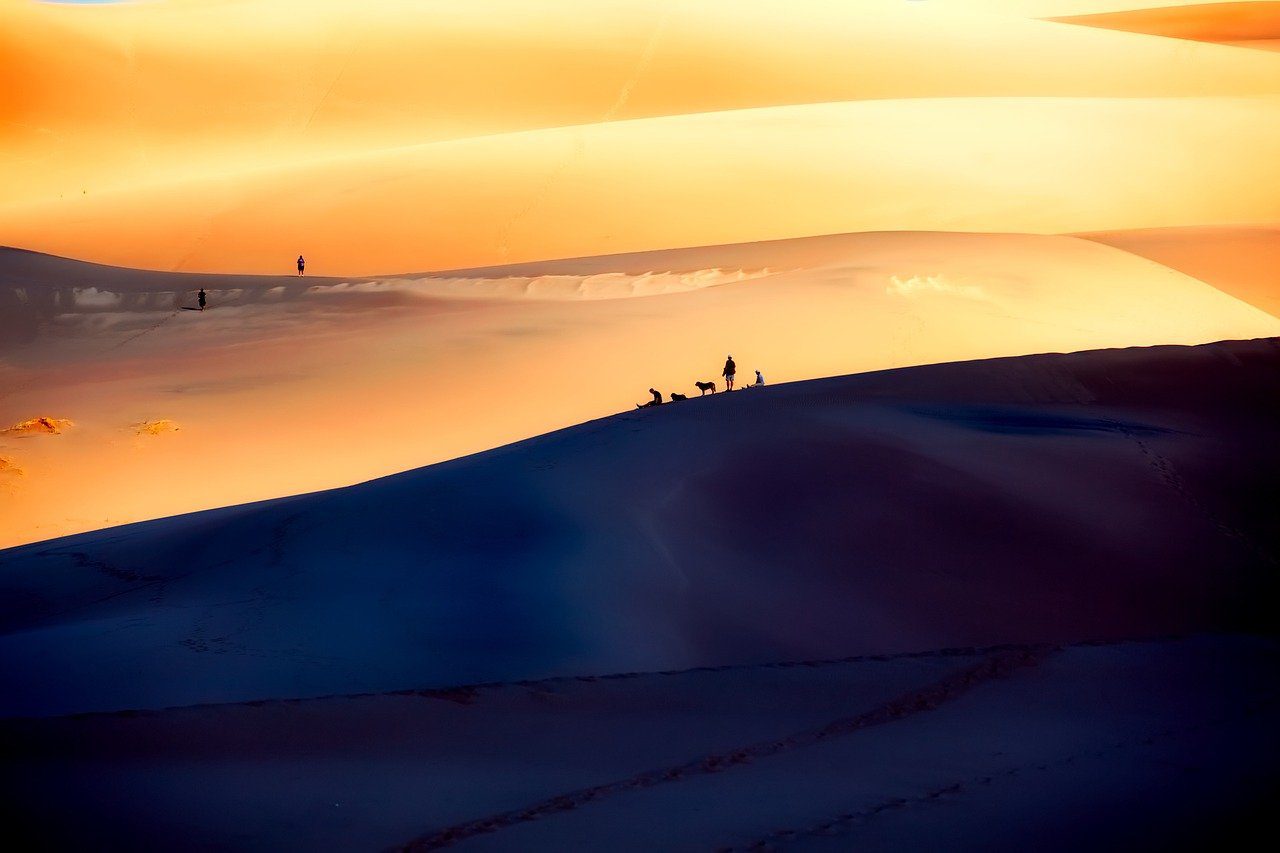Climb to the top of the Great Sand Dunes National Park and Preserve’s slopes of fine sand. Slide back down at exhilarating speeds. Navigate rocky trails and float along pristine waters of a gentle stream.
See 30 square miles (48 square kilometers) of deep sands sandwiched between snow-dusted mountain ranges and a micro-desert. Dunes continually rise and fall as streams carry sediment down western mountains. Prevailing winds blow sand from dried river beds against the foothills to the east to pack into dunes.

Climb the giant sand piles anywhere in the park. Borrow a dunes-accessible wheelchair if needed. At 700 feet (213 meters), the highest dunes require a strenuous climb and provide views well worth the effort. Looking east, the snow-covered Sangre de Cristo Mountains appear to loom just beyond the sand. In the opposite direction, impressive peaks of the more distant San Juan Mountains soar skyward.
Before you arrive, rent sleds or sand-boards from San Luis Valley stores. Take photos from the top of the dunes and make a video as you take the exciting ride to the bottom. Hike at night on the dunes during a full moon and camp in this unique setting under a clear, dark sky.

Follow your desert expedition with a refreshing dip in Medano Creek during springtime snowmelt. This pristine waterway appears out of place in the sands, but is an ideal place to swim or float along the gentle current on an inflatable toy.
Walk beneath thick pines lining the Montville Nature Trail. For a rigorous hike, climb Mount Herard past several alpine lakes and look down at the dunes from the 13,297-foot (4,053-meter) peak.
Great Sand Dunes National Park is in southern Colorado, a 4-hour drive south of Denver and similar distance north of Albuquerque. Pay a small entrance fee. The park is open year-round although the sand gets scorching hot on summer days.
According to expedia.com. Source of photos: internet








